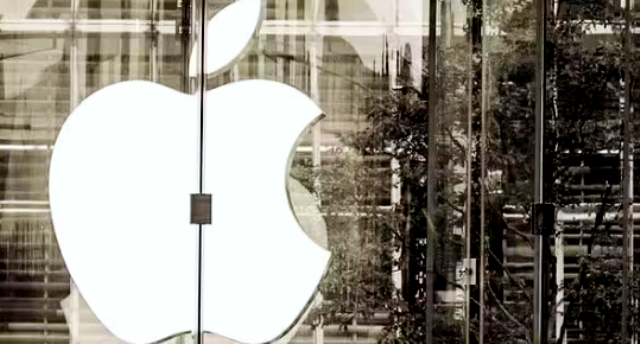Apple adopt OLED displays for all iPhones from 2025
Apple adopt OLED displays for all iPhones from 2025: Apple is known for pushing the boundaries of technology, and its commitment to innovation will continue with the upcoming switch to OLED displays in all iPhone models from 2025. This transformation marks a milestone in the smartphone industry, promising better display quality, power efficiency and more. Immersive user experience. But what does this mean for consumers, and why is Apple making this move now? Let’s focus on the details.
What is an OLED Display?
Definition and Technology behind OLED: OLED stands for Organic Light-Emitting Diode. Unlike traditional LCD displays that rely on light to illuminate the pixels, OLED displays generate light directly from each pixel. This allows for deeper blacks, brighter colors and more dynamic contrasts.
Comparison between OLED and LCD
LCD (Liquid Crystal Display) has been the standard in display technology for many years. But OLED is quickly becoming the preferred choice for high-end devices. The main differences are contrast, color accuracy and power efficiency. While LCDs require a constant backlight, which results in less accurate blacks and higher power consumption, OLEDs offer better picture quality and energy efficiency by lighting only the elements that are needed.
Evolution of iPhone displays
Early iPhone Display: The LCD Era When the first iPhone was released in 2007, the LCD display was cutting edge. Apple has stuck with LCD technology for years, steadily improving resolution, color accuracy and clarity with each new iteration of the iPhone.
Introduction of OLED in iPhones
Apple made significant progress in 2017 with the iPhone X, the first iPhone to feature an OLED display. The highlight is the OLED screen on the iPhone X, which delivers rich colors, truer blacks and an immersive visual experience. Since then, OLED displays have been developed into the Pro models of iPhones, setting them apart from the standard models.
Apple is moving towards OLED
Better visual experience: One of the primary reasons why Apple switched to OLED in all iPhone models is the superior visual experience it offers. With more accurate color, deeper blacks and higher contrast ratios, OLED displays provide users with a more vivid and vivid screen experience.
Power efficiency and battery life
OLED displays are more efficient than their LCD counterparts. By lighting only the necessary elements, OLEDs consume less power, which extends the life of devices. This capability is critical as smartphone users demand longer and longer durations without any performance degradation.
Flexibility in design
OLED technology also allows for a more flexible display design. This could lead to thinner, lighter iPhones or new form factors in the future, giving Apple more creative freedom in designing its products.
Impact on the iPhone lineup
Uniformity across models: By 2025, all iPhone models will have OLED displays, creating a uniform experience across the entire lineup. The move will simplify Apple’s manufacturing process and lower costs over time, as the company can standardize its display technology.
Potential price effects
While OLED displays are currently more expensive to produce than LCDs, costs are expected to drop as the technology becomes more widespread. However, consumers will initially see a slight increase in iPhone prices as Apple switches to this premium display technology across the board.
Benefits of OLED to Consumers
Better Color Accuracy: One of the best advantages of OLED displays is their superior color accuracy. This is important for users who watch videos, play games or edit photos on their devices.
A better view of English
OLED shows also offer better viewing angles compared to LCDs. This means colors and brightness are consistent even when viewing from the side of the screen.
Fast response times
The fast response times of OLED displays make them suitable for gaming and other applications where screen lag is an issue. This feature undoubtedly increases the user experience.
Challenges in OLED Adoption
Manufacturing Costs: One of the significant challenges in adopting OLED displays is the high manufacturing cost. This is due to the complex production process and materials required, which are more expensive than those used in LCD production.
Potential supply chain issues
With Apple’s decision to adopt OLED in all iPhone models, there could be challenges in the supply chain, especially in moving the necessary components. Apple needs to work with its suppliers to ensure a steady supply of OLED panels.
Apple OLED suppliers
Current Partnerships: Apple currently sources its OLED displays from a few key suppliers, including LG and LG. These companies were instrumental in bringing OLED technology to the iPhone lineup.
Future collaborations
As Apple expands its use of OLED displays, it may look to diversify its base or develop new manufacturing technologies to produce a steady supply of high-quality displays.
Introducing the future of the smartphone
Beyond OLED: MicroLED and other technologies: While OLED is currently the pinnacle of display technology, Apple is already exploring the next generation of screens. MicroLED, for example, offers better brightness, energy efficiency and even better lighting performance.
Apple’s potential innovations
Apple is known for its ability to innovate, and the switch to OLED is a step in the company’s ongoing quest to improve productivity. Future iPhones may feature new display technology that further blurs the lines between the digital and physical worlds.
Apple’s plan to adopt all iPhone models by 2025 is a significant step the company will take in terms of innovation and quality. With better visuals, improved power efficiency and the potential for new design possibilities, the Switch is set to elevate the iPhone experience to new heights.
Frequently Asked Questions
1. Why is Apple switching to OLED for all iPhones?
Apple is turning to OLED because of its superior quality, energy efficiency and design flexibility.
2. When will all iPhones feature OLED displays?
Apple plans to equip all iPhones with OLED displays by 2025.
3. What are the advantages of OLED over LCD?
OLED offers better color accuracy, deeper blacks, better viewing angles and greater power efficiency compared to LCD.
4. Will OLED displays make iPhones more expensive?
Initially, the price of iPhones may increase slightly due to higher display costs of OLED displays.
5. What future display technology is Apple exploring?
Apple is exploring MicroLED and other advanced display technologies to further enhance the future of the iPhone


